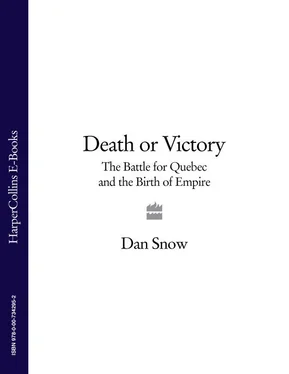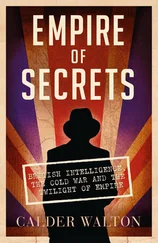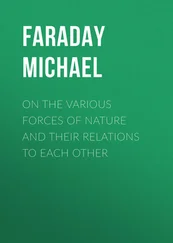I was blessed with researchers, translators, and givers of advice. The book would not have been written without Gwyneth MacMillan in Quebec. She was efficient, intelligent, generous, and cheerful. Eddie Kolla in Paris was enormously helpful. Michael Manulak was very helpful in the opening stages. My sister, Rebecca Snow, is an expert in her own right and Roger Nixon and David Mendel were stalwarts; the latter walked me around Quebec bringing the eighteenth century alive on every street. Glen Steppler, Laurence Westgaph and Erica Charters were very good to me while Isabelle Pila and Brigitte Sawyer were vital translators.
Shuna and Katie Snow encouraged me and made me laugh through the process. My parents, Peter Snow and Ann MacMillan, were as unfailingly supportive as they have been of all my projects through the years. They read every word and, more importantly, they have always told me I could do it.
AN HOUR BEFORE SUNRISE the hated drummers marched along the rows of tents. Their sticks beat the ‘General’, driving a clear message into the sleeping brains of the men. Even those befuddled by ‘screech’, cheap rum brewed by boiling the sediment from molasses barrels, were dragged from their slumbers. Men clambered over their drowsy comrades and emerged into the open air. Their feet squelched in the urine-soaked ground, for soldiers invariably eased themselves at the entrance to their tents or even inside where they slept. For an hour a mass of figures in the semi-darkness jostled and cursed. But as the light grew so did their regularity. By the time the drummers beat the ‘Assembly’ at 0500 hours the tents had been struck, kit packed, weapons retrieved and the men bundled onto the assembly area to line up by company and regiment, ready for inspection, colours unfurled, sharp new flints securely fastened in the jaws of their muskets. Companies of between 50 and 100 men were commanded by a captain who knew every one of them by name. When he was happy that his men were properly attired, their weapons clean and thirty-six rounds in their cartridge cases he reported to the major or lieutenant colonel and soon the whole force was ready to march.
Groups of light infantrymen and rangers set off first. The British force had been in the heart of Canada for less than a week and they had been given a shocking immersion into the world of insurgency, sniping, ambush and Native American warfare. Bodies of soldiers that strayed from the riverbank were found horribly killed and mutilated, their scalps taken as trophies by Native Americans and the Canadians who had learnt their way of war from them. Civilians in this populous part of Canada were trapped in between. Their farmhouses ransacked, their provisions confiscated by hungry warriors. That very morning a patrol of British light troops had searched one house and finding no one set it on fire. A British officer reported that ‘they were alarmed with bitter shrieks and cries of women and children’. They had, apparently, ‘foolishly concealed themselves among some lumber in a cellar’. British troops ‘very humanely exerted themselves for the relief of those miserable wretches, but their best endeavours were ineffectual…these unhappy people perished in the flames’. The officer wrote in his diary that ‘Such alas! are the direful effects of war.’ 1By the end of the summer an incident like this would barely raise a comment as atrocity fed atrocity and the campaign became a nightmare of terror, retribution, and disease.
This was the first serious push away from the beaches where the British had landed just days before. Major General James Wolfe, their commander, had ordered this force to move west, away from the comforting presence of the fleet anchored in the river, to tighten the noose around Quebec, a fortress said to be impregnable, capital of the vast French North American empire. They were to seize a prominent piece of ground called Point Lévis from where British guns could fire across the river into Quebec. The soldiers knew the French would not let this probing force march with impunity. The terrain favoured the defence with thick woodland and a steep rise overlooking the track. One British officer described the route as ‘no regular road’ but ‘only a serpentine path with trees and under-wood on every side of us’. 2
Rangers led the column. They looked more like Native Americans than Christian subjects of King George with tomahawks at their waists, moccasins and powder horns, while a few even carried scalps of fallen enemies hanging from their belts. They were nearly all Americans recruited from the frontiers and despite their appearance and their unruly reputation (the French dubbed them ‘the English savages’) their skill in this kind of conflict meant that they could command twice the pay of red-coated regular infantrymen. Some carried the long, accurate rifle but most thought that the Brown Bess musket, possibly with a few inches sawed off the end to make it lighter, was a better weapon for close quarters bush fighting. It was quicker to reload and capable of firing buckshot. Alongside them was a new brand of British regular, the light infantryman. They had been introduced by innovative officers to try to improve the British army’s woeful performance in the wilderness fighting of North America. They were picked men who had been selected for having a sharp mind, an ability to improvise and a true aim. Major General Wolfe had written careful instructions. The light troops were to ‘post detachments in all the suspected places on the road to prevent the columns from being fired at, from behind trees, by rascals who dare not show themselves’. As the column marched past the light troops would then fall in as the rear guard. 3They had not advanced far before the woods echoed to the bangs of muskets and rifles, the howls of wounded and the shriek of the Native Americans, allies of the French.
The men of the North American tribes were bred as warriors. Martial prowess was highly prized and even in times of peace young men picked fights with neighbouring groups in order to win acclaim. Prisoners, in Native cultures, could replace relatives who had fallen in battle or could be tortured expertly so that their pain assuaged that of the family of a fallen brave. In the two centuries since Europeans had introduced gunpowder into North America the Native Americans had mastered the musket and rifle and men had honed their marksmanship for hunting as well as war. At close quarters they were just as skilled with tomahawk or knife. Their terrible reputation for savagery, together with expert bushcraft, exotic tattoos, and haunting war cries, had all conspired to send many British units into total panic at even the prospect of an encounter. The Canadians of European descent were no less fearsome. Canada had only just survived in the face of an unforgiving climate and constant hostility from some tribes. Her young men had adapted to the North American way of war and to many outsiders they were indistinguishable from the Native warriors. As the British force pushed along the track the biggest challenge was overcoming the massive psychological inferiority that years of ambush, slaughter, and defeat had bred in the men. The redcoats were edgy. One officer reported an unfortunate ‘friendly fire’ incident in which a light infantryman shot one of his corporals, and the wounded man had to be carried on ‘a blanket with skewers to two poles’. It took six men to carry the casualty and they were ‘relieved every quarter of an hour’. 4
Wolfe would report to his political masters in London that the force had ‘two or three skirmishes’ but the evidence from those who actually sweated up to Point Lévis, clutching their muskets and scanning the unfamiliar woodland for any movement, suggests that it was not as casual as Wolfe made it sound. 5A Highlander who acted as his regiment’s bard gives a graphic description in a Gaelic song: ‘the marshalling was under Beaumont/ those ranks were handsome/ sent up to Pointe Levis/ to test the warriors;/ Indians and Frenchmen/ were very close to us in the bushes/ wrecking the heads/ and the legs that belonged to us!’ 6As the soldiers skirted the shore many caught their first horrifying glimpses of this new kind of war. One young Scotsman was horrified at the sight of several British corpses, ‘all scalped and mangled in a shocking manner’. He wrote that, ‘no human creature but an Indian could be guilty of such inhuman cruelty,’ but changed his journal to read, ‘no human creature but an Indian or Canadian could be guilty of such inhumanity as to insult a dead body’. 7His men were uncowed though, if the Gaelic war song is to be believed: ‘when we were fully drawn up/ in line of battle/ and watching them/ to see if they would wait and give us satisfaction/ they sprayed fire into our faces/ but they got it back in return;/ they took fright/ when they recognised us’. 8The hit and run tactics of the Canadians and Native Americans could slow the British advance but not stop it. In a series of mini engagements, the light infantry and the rangers edged forward towards Point Lévis. One sergeant called it a ‘sharp skirmish of near two hours’ and said ‘we sustained a considerable loss of killed and wounded’. 9An officer wrote that in the end the French forces could not ‘withstand our fire and numbers’ and put the casualty figure at ‘thirty killed and wounded’. 10The fighting had been intense enough to make their commander think about turning back.
Читать дальше











